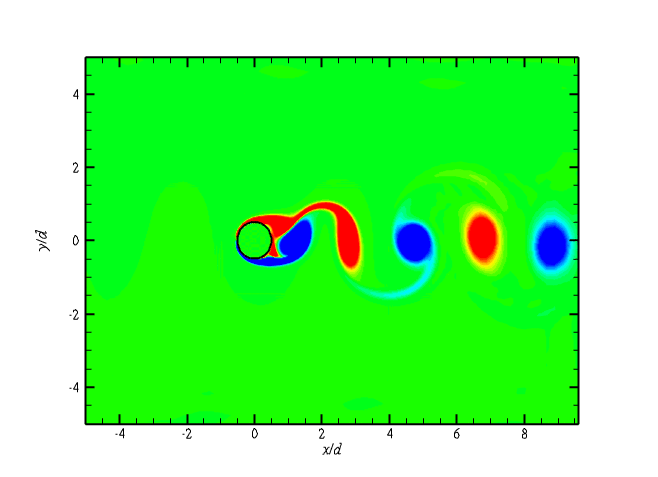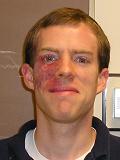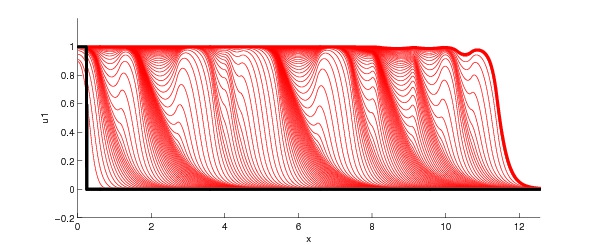Immersed boundary problems
Anita Layton
Frequently in problems of fluid flow or wave propagation, an interface between different regions exerts a force on the material, or an interface separates regions of different material properties. Substantial effort has been directed to developing computational techniques for simulating moving boundaries or interfaces within a viscous fluid domain.
The most notable example is perhaps the immersed boundary method, developed by Charles Peskin for solving the full incompressible Navier-Stokes equations with moving boundaries, originally for studying blood flow through a beating heart. We are developing accurate and efficient computational methods for (i) simulating the motion of an immersed deformable solid in viscous fluid; (ii) implicit time-stepping of a stiff immersed boundary; (iii) resolving the boundary layers that may arise near a (stiff) immersed boundary.
Thin film flows
Tom Witelski
Thomas Witelski's expertise is in applied mathematical methods for fluid dynamics and mathematical modeling of physical systems. Using asymptotic analysis, perturbation methods and numerical simulations, he focuses on the dynamics of ordinary- or partial differential equations for models describing real-world problems. Recent work in fluid dynamics has centered on thin film flows with surfactants (
1,
2) with biophysical applications for mucus layers in lung airways and liquid tear films on the eye. Other recent work in dynamical systems has involved spiking models for activity in
neuron networks.
Random Media
James Nolen
Dr. Nolen studies partial differential equations, which have been used to model many physical and biological systems. In many real systems, the parameters for such equations are known only approximately, or they may have fluctuations that are best described statistically. So, he is especially interested in equations modeling random phenomena and whether one can describe the statistical properties of the solution to these equations. For example, he has worked on nonlinear partial differential equations that describe waves and moving interfaces in random media. This work involves ideas from both analysis and probability.
Modeling Immune Systems
Bill Allard
and
Tom Kepler
Bill Allard has been collaborating with Thomas Kepler of Duke Biostatics and Bioinformatics on the modeling and simulation of activity in immune systems, mainly in lymph nodes. These models, for the most part, are spatial and three dimensional and more often than not require the integration of systems of reaction diffusion systems couple with stochastic differential equations. These activities have supported
by an NIH contract.






